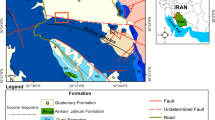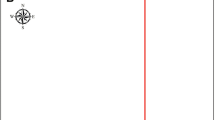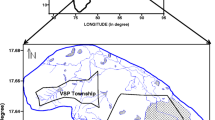Abstract.
Sinkholes are near-surface indicators of active karst features at depth, such as cavities, conduits and solutionally enlarged fractures. This study tests the usefulness of ground-penetrating radar (GPR) to identify and locate buried sinkholes as a means of interpreting the existence of these subsurface hydraulically-active karst features. GPR survey was made at the Ghor al Haditha area west of the Jordan-DSTF in the Jordan Valley Escarpment at the eastern Dead Sea shoreline. GPR profiles (100 MHz) made along the eastern Dead Sea shoreline showed a trough-like pattern of radar reflections outlining a series of possible filled sinkholes. This feature is about 38 m wide and about 12 m deep. Its width is consistent with the width of the feature obtained from the topographic map of the area. The GPR survey suggests that this feature has been filled with relatively dense and resistive materials. This structure lies almost directly above a major water bearing zone.
Similar content being viewed by others
Author information
Authors and Affiliations
Additional information
Electronic Publication
Rights and permissions
About this article
Cite this article
Batayneh, A.T., Abueladas, A.A. & Moumani, K.A. Use of ground-penetrating radar for assessment of potential sinkhole conditions: an example from Ghor al Haditha area, Jordan. Env Geol 41, 977–983 (2002). https://doi.org/10.1007/s00254-001-0477-8
Received:
Accepted:
Issue Date:
DOI: https://doi.org/10.1007/s00254-001-0477-8




